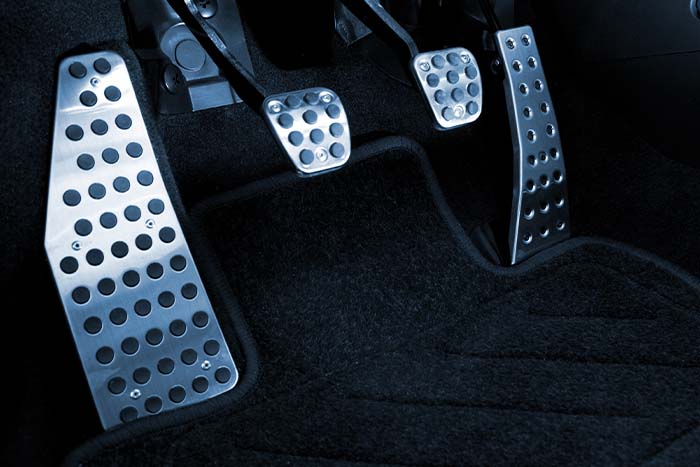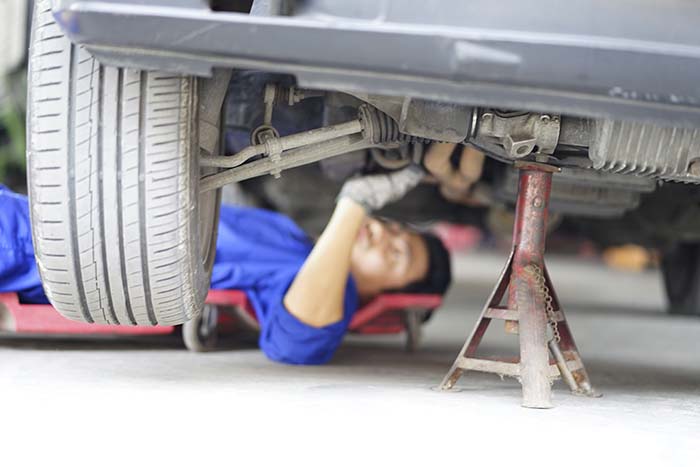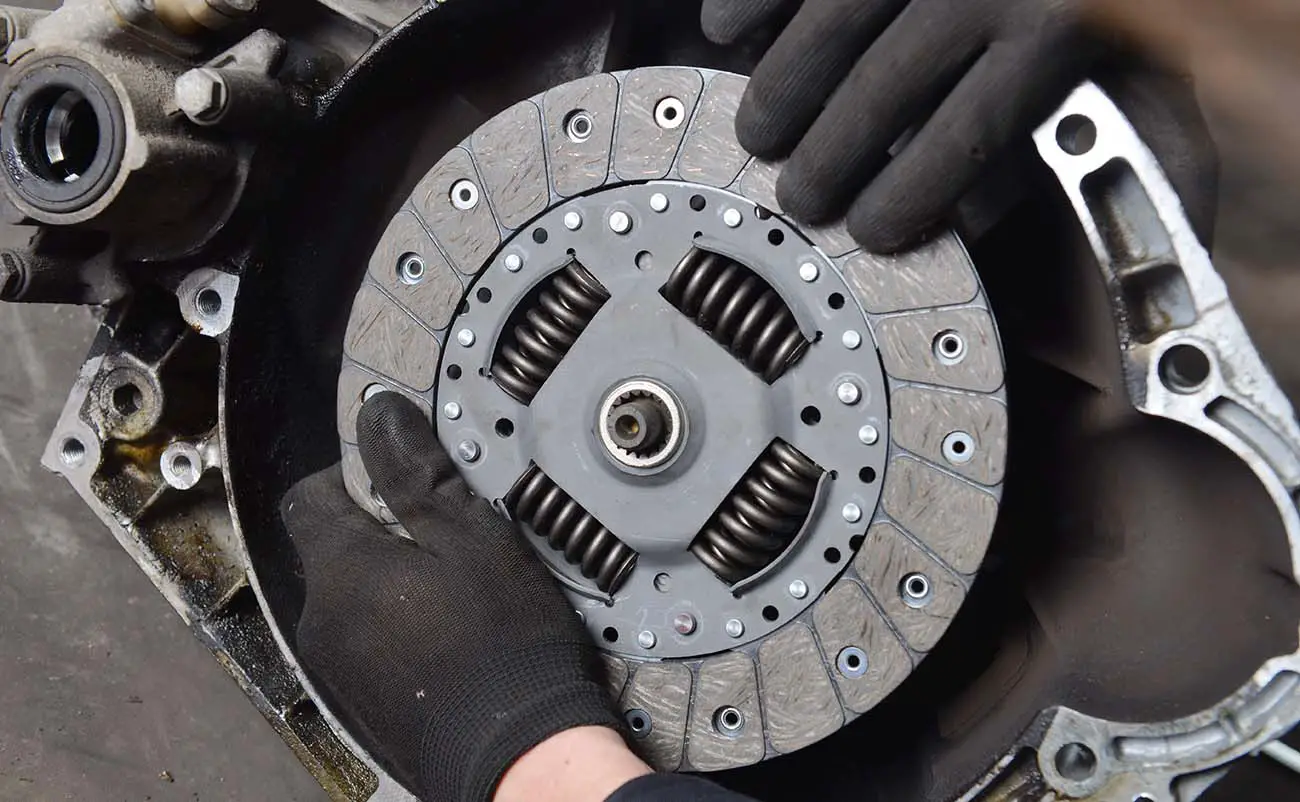If you drive a car with a manual transmission, you should be very familiar with your car’s clutch. You must press the clutch pedal each time you shift gears, and the clutch itself is an integral part of the vehicle’s drivetrain. But what happens when your clutch starts having problems? A bad clutch can prevent your car from going into gear or allowing you to shift properly. It will need to be fixed so that you can drive your vehicle like normal, but how much is it going to cost you? We will give you all the details on the cost of a clutch replacement as well as how you can perform the job yourself.
Table of Contents
Average Clutch Replacement Cost
So, how much does it cost to replace a clutch? Like all auto repairs, the price you pay for a clutch replacement depends on the make and model of your vehicle. However, we will discuss the average costs here. On average, you can expect to pay around $1,200 to have the clutch in your car replaced. The cost can range anywhere from $900 to $1,800 depending on your vehicle and the shop you are using. The dealership will almost always be more expensive than an independent auto repair shop.
This job usually takes an experienced mechanic a few hours to complete. So, labor costs for the job are typically anywhere from $500 to $800. The parts needed to complete the repair will cost you about $400 to $600 in most cases. If the clutch has become extremely worn and has damaged other parts, then that will add cost to the job.
How Your Car’s Clutch Works
If your vehicle has an automatic transmission, you have likely never even thought about how a clutch works. However, even automatic transmissions have clutches inside them. With a manual transmission, the driver must manually operate the clutch. At a high level, the clutch is the mechanism that transfers energy from the engine to your transmission. This is what allows the wheels on the vehicle to turn as the engine runs. Now, let’s dive a little deeper into the details.
As your engine runs, the camshaft spins inside. On the outside of the motor, the flywheel is attached so that it spins as well. The car’s clutch disc presses firmly against the flywheel. Since it is pressed so firmly against the flywheel, the disc also spins when the clutch is engaged. When the disc spins, this transfers the engine’s power to the transmission and causes the wheels to spin.
The pressure plate is the part of your clutch that firmly presses the clutch disc against the flywheel. It has large, powerful springs that hold the disc tightly against the flywheel. When you press the clutch pedal, the throwout bearing is responsible for disengaging the pressure plate. Hydraulic fluid flows into the master cylinder and slave cylinder as you press the pedal, and the pressure is used to disengage the plate. This allows you to shift gears because it releases the clutch disc. As you release the pedal, the disc once again gets pressed against the flywheel, and the energy transfer takes place.
Eventually, the clutch disc starts to wear down and no longer makes firm contact with the flywheel. When this happens, you might start to think that your transmission is slipping and you need transmission service. However, it is actually your clutch that is slipping instead. That is when it is time for a clutch repair, and most of the time, your clutch needs replacement when this happens. You might think that you are going to incur some transmission repair costs, but you will have clutch repair costs instead.
Signs Of A Bad Clutch

So, how can you tell when you have clutch problems? You can watch out for several things, and you will feel most of them as you drive. Here are the most common symptoms of a clutch issue.
— Burning Rubber Smell
If you smell something that smells like burning rubber, that is more than likely your clutch. The clutch disc itself is made of frictional material similar to brake pads. If the disc is not making enough contact, friction will be generated between the disc and the flywheel. This will cause the disc to wear quickly, and you will likely even smell the disc as it gets hot. A burning rubber smell is a telltale sign of a clutch issue, so you should have a mechanic check your car soon.
— Vibrating Clutch Pedal
Your clutch system should operate smoothly when things are working properly. So, if you notice that your pedal is vibrating as you drive, then you could have issues. You may have a worn pilot bearing, or there could be a problem with another clutch mechanism. Either way, the pedal should not vibrate when you drive, so you should get this issue checked out.
— Hard Or Soft Clutch Pedal
Disengaging the clutch plate takes a decent amount of pressure, so your clutch pedal should be firm but not impossible to press. If the pedal goes to the floor without any resistance, you definitely have an issue. Similarly, if the pedal is so hard that you cannot press it, there is also a problem. You should know how the clutch pedal feels when things are working normally, so be on the lookout for any changes in the pedal’s feel. If it starts to feel different, then you might need a new clutch soon.
— Vehicle Surging Or Jerking
As you drive your car, the movement should be nice and smooth as you press the accelerator pedal. Clutch problems can sometimes cause your car to feel like it’s jerking as you accelerate. This often happens as the disc wears down and starts slipping. Since it is not holding firm contact with the flywheel, the power is not constantly being transferred as it should. If you notice your vehicle bucking or jerking as you drive, then take it to a mechanic right away.
Replacing A Vehicle Clutch Yourself

Most people choose to take their car to the repair shop for this job, but replacing a clutch yourself is not an impossible task. Many people wonder how to replace a clutch, and the complexity of the job greatly depends on the type of vehicle that you own. Replacing the clutch in an old Ford or Toyota is going to be much simpler than a Mercedes-Benz in most cases. Likewise, rear-wheel drive vehicles tend to be a little easier than front-wheel drive vehicles due to the setup of the components.
First, make sure that you are comfortable performing the job yourself. It will require several hours of labor and some mechanical experience. If you’re confident that you can handle it, then go ahead and purchase a clutch kit for your vehicle. These kits usually include the clutch disc, pressure plate, release bearing, and even the pilot bearing in some cases.
You will need to disconnect the driveshaft from the transmission and then disconnect the transmission from the engine to get to the clutch. Some vehicles even require you to remove the engine to get to the parts! You will remove the old clutch parts and replace them with new parts. You should also inspect all the pieces that are not included in your kit to make sure they are in good condition. In some cases, your flywheel might need resurfacing also.
While you can save a few hundred dollars on repair costs, most people turn to an ASE-certified mechanic to perform a clutch repair. The job is too complex for most backyard mechanics, and having a repair shop do the work ensures that you will get a warranty with your new clutch as well. You would be extremely disappointed if you did the work yourself and then found that your gearbox wouldn’t shift once you started your vehicle.
The Bottom Line
All clutches will wear out eventually, although your driving style can play a big role in how long your clutch will last. Most clutches have a lifespan of around 100,000 miles, although some can wear out as quickly as 25,000 to 30,000 miles. When it’s time for a replacement, you can expect to pay about $1,200 for the repair. Common vehicles like a Honda Civic or Toyota Camry will usually be cheaper, while more complex cars like a Subaru or Volkswagen will have a higher price. It is generally a good idea to have a professional mechanic perform the work unless you are extremely confident that you can do it yourself.
Frequently Asked Questions
Is replacing a clutch a big job?
Yes, replacing a clutch is a complex job that usually requires several hours of work. It requires disconnecting the car’s driveshaft and transmission, and your car could have serious problems if the work is not done properly. Only experienced mechanics should attempt this kind of project.
What are some common causes of a bad clutch?
The most common cause of a bad clutch is a worn clutch plate. This part wears out over time, and it will eventually need replacement. Other issues you might experience are a bad master or slave cylinder, bad throwout bearing, bad pilot bearing, or problems with the pressure plate. Any of these parts can fail, and the bearings are usually replaced when a new clutch is installed.
What is the lifespan of a clutch?
Most clutches will last around 100,000 miles. Clutches in heavy-duty vehicles might even last 150,000 miles or more. However, clutches in high-performance cars might only last for 25,000 miles. If you ride your clutch pedal frequently while you drive, then your clutch will wear out more quickly.

